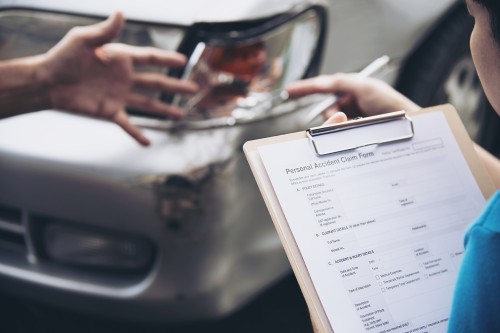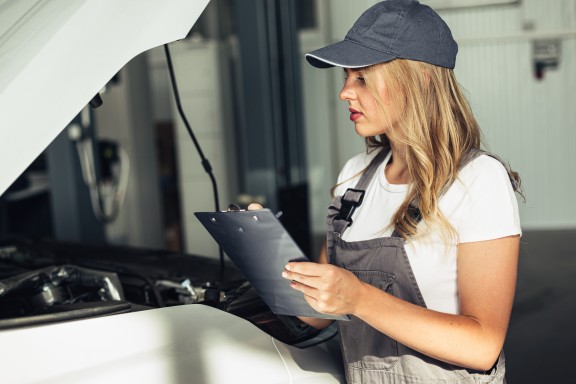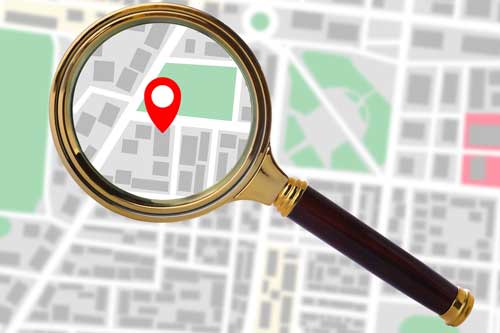What do mechanics actually look for during a vehicle safety inspection? It’s more than just a quick glance under the hood. A safety inspection is a thorough checkup to make sure your car is safe to drive and meets legal standards. From brakes and tires to lights, steering, and suspension, every key system is inspected to catch wear, damage, or anything that could put you at risk on the road. This article breaks down exactly what’s checked and why it matters so you know what to expect and how to keep your vehicle road-ready
What Is a Car Safety Inspection?
A car safety inspection is like a checkup at the doctor’s office for your vehicle. It’s carried out by a certified mechanic who goes over all the key components of your car to make sure everything’s in good, safe working order. They’ll inspect things like the brakes, tires, lights and steering. Basically, anything that affects how your car behaves on the road.
In many cases, a safety inspection is required—like when you’re registering a vehicle, selling it, or bringing it in from another province. The main goal? To catch any potential issues before they turn into dangerous problems. It’s one of the best ways to make sure you, your passengers, and everyone else on the road stay safe.
What’s Included in a Car Safety Inspection?
A typical safety inspection focuses on the major systems that keep your car safe. Here are some of them:
Brake and Tire Safety Inspection
Brakes and tires are two of the most crucial components when it comes to staying safe behind the wheel. During this part of the inspection, the mechanic will test how responsive your brakes are, check for wear and tear, and make sure there aren’t any leaks. They’ll also take a look at the brake fluid level and condition.
As for your tires, they’ll be checking the tread depth to make sure it’s not too worn, the air pressure to see if it’s at the right level, and looking for any visible damage like cracks, cuts, or bulges. These two systems—brakes and tires—work hand in hand to keep your car steady and help you stop when it matters most, especially in emergencies.
Lights and Signals
Your car’s lights and signals are for how you communicate on the road. During a safety inspection, a mechanic checks your headlights, brake lights, turn signals, and hazard lights to make sure they all work properly and shine brightly. They should turn on right away when you use them without any flickering or dim spots. If a bulb is burnt out, flickering, or just not as bright as it should be, it’ll need to be replaced. This is especially important for driving at night or in bad weather when visibility is everything.
Steering and Suspension
Your steering and suspension systems are what keep your car stable, smooth, and easy to control. During an inspection, the mechanic will check to see if the steering feels tight and responsive—there shouldn’t be any pulling or wobbling. They’ll also take a look at the shocks and struts, which help absorb bumps and keep your ride comfortable. If any parts are leaking, worn down, or loose, they’ll need attention. Problems here don’t just make the driver uncomfortable—they can seriously affect your safety.
Emissions vs. Safety Inspection
Not sure what kind of inspection your car needs? Here’s the difference:
- A safety inspection checks your car’s basic systems like brakes, tires, lights, wipers and steering to make sure it’s safe to drive.
- An emissions test checks your exhaust system to see how much pollution your car is putting out.
Depending on where you live, you might need one, both, or neither. Safety inspections keep you and others safe on the road, while emissions tests help protect the environment.
How Often Do You Need a Car Safety Inspection?
That depends on where you live because some provinces require a safety inspection every year, while others only ask for it when you sell or register a used vehicle. Older cars might need to be checked more often just because parts wear out quicker over time.
How to Pass a Car Safety Inspection
If you want to boost your chances of passing the inspection the first time, do a quick check beforehand. Look at your lights, brakes, tire tread, windshield wipers, and fluid levels. If anything looks worn out or isn’t working right, fix it before the inspection. A clean, well-maintained vehicle is more likely to pass with flying colours. If you’re not sure what to look for, ask your mechanic for a pre-inspection check.
Cost of Vehicle Safety Inspection
The cost of a vehicle safety inspection can vary depending on the shop and your location, but generally, it falls between $60 and $100. If the mechanic finds something that needs fixing in order to pass, those repairs will be extra. Some shops might also charge taxes or small service fees, so it’s a good idea to ask for a quote ahead of time so there are no surprises.
Annual Vehicle Inspection: Is It Necessary?
In some provinces, yes, because an annual safety inspection is required by law. In others, it’s optional but still a smart move. Getting your vehicle checked once a year can help catch issues early and prevent bigger problems down the road. This is especially true for older cars, which tend to need a little more TLC. Even if it’s not mandatory, it’s definitely recommended.
Schedule Your Vehicle Safety Inspection Today
Is it time for your vehicle’s safety inspection? Don’t wait; book your appointment today and hit the road with confidence. Our certified technicians are friendly, efficient, and thorough. We’ll explain anything that needs fixing and help you stay safe without the stress. Give us a call. We’re here to make the process easy
What are the car inspection requirements by province?
Each province has its own rules. Some require annual inspections, while others only need one when registering a used car or transferring ownership. To find out what applies to you, check your provincial government’s website or talk to your local licensing office.
Where can I find a car inspection near Richmond Hill?
If you’re in Richmond Hill, you’re in luck; there are plenty of certified garages and service centers that offer safety inspections. You can look online, ask your local mechanic, or search for shops approved by the Ministry of Transportation. Just make sure they’re officially licensed to perform inspections.
What's included in a car safety inspection?
A standard safety inspection covers the essentials: brakes, tires, lights, steering, suspension, windshield, wipers, and more. The mechanic will check that everything meets legal safety standards and that nothing is damaged or overly worn.

